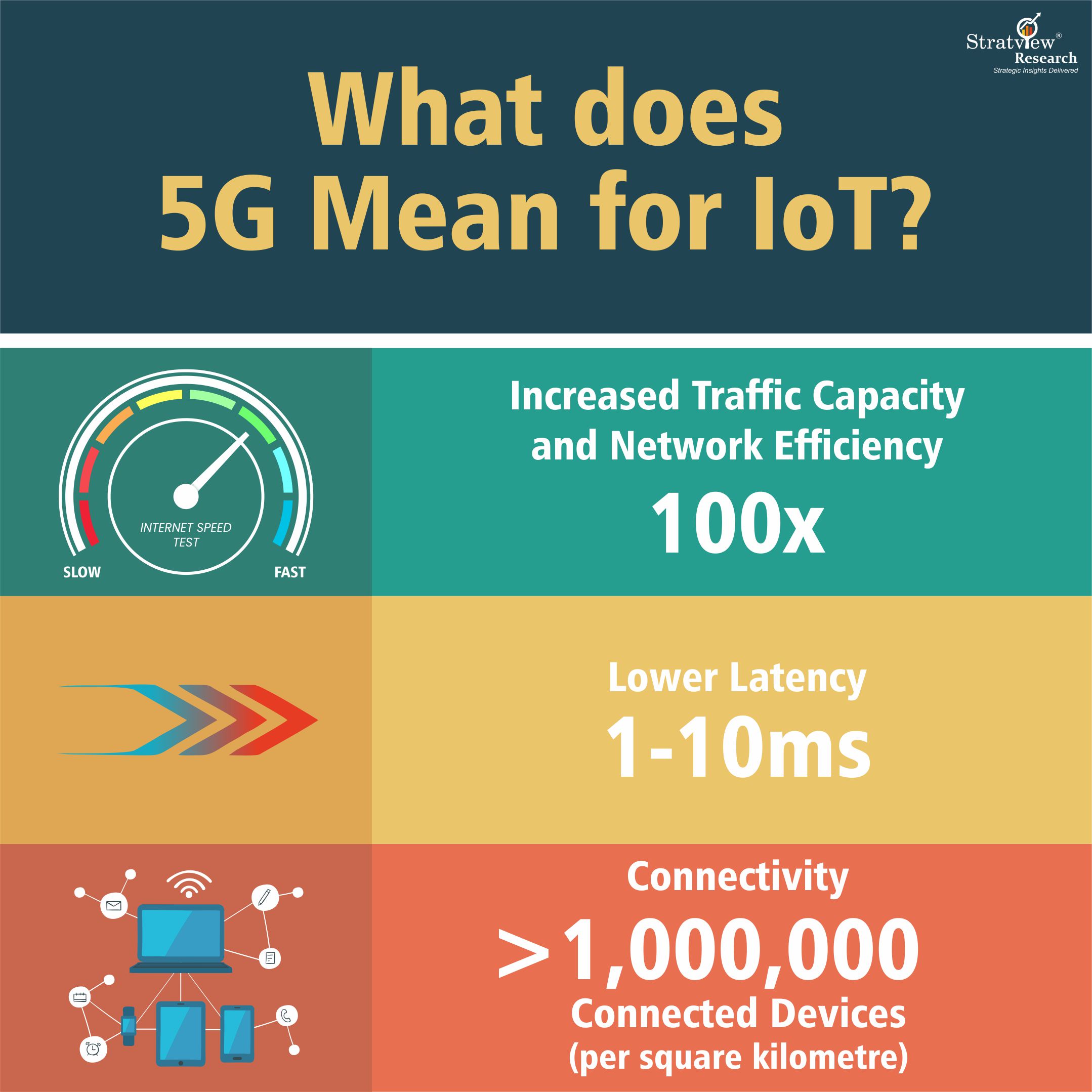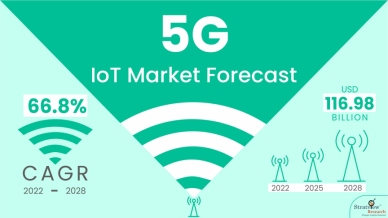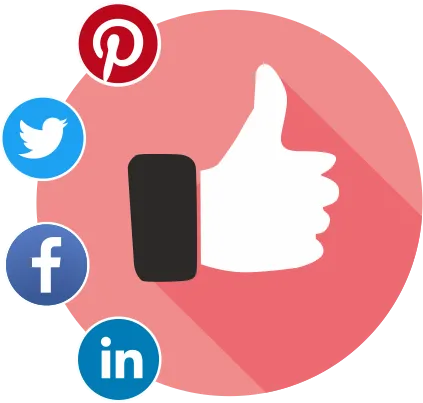The Internet of Things (IoT) is nothing but a growing network of physical devices that get connected to the Internet and also to each other, allowing devices to collect and share a huge amount of data.
For an IoT network to work properly, connectivity plays a vital role, and the preferred type of network/connectivity depends on the device and its function.
Compact spaces like homes, offices, and other spaces that use any sort of IoT device may prefer ‘low-power, short-range networks’ that need small batteries. A few examples of such networks are Bluetooth, Near Field Communication (NFC), Wi-Fi, Z-Wave, and Zigbee. These networks offer cost-effective solutions with minimal energy consumption.
While Wi-Fi is prevalent, its continuous power demand and limited range (data signals up to 10meters) might not suit all scenarios. Mesh networks like Z-Wave (communicates device-to-device) and Zigbee (can communicate up to 300 meters) efficiently connect devices within a small area, ensuring seamless communication without draining resources.
Protocols like Low-power, wide-area networks (LPWAN) on the other hand, enable communication across a minimum of 500 meters to several 1,000km. LPWANs offer wide coverage and minimal energy usage. 4G cellular networks like Cat-0, Cat-1, Cat-M1, M2, etc., also cater to different performance needs and advanced cellular IoT solutions and the time has come for cellular networks in IoT, to advance a step further, with the adoption of 5G.
Cellular Networks for IoT? Why?
The ubiquity of IoT devices pushed the demand for SigFox, LoRa, and other similar network protocols that offered low-power and wide-area network facilities. On the other hand, traditional cellular networks like 4G and LTE consumed more power and did not fit well with applications where a small amount of data was transmitted irregularly.
Gradually, the need for high reliability and low latency came into existence, which created an opportunity for 5G cellular networks to enter the IoT domain. Ultra-Reliable Low-Latency Communication (URLLC – a subset of 5G network architecture) is a kind of communication that serves as the best solution for such applications.

Fig. 1: What does 5G mean for IoT?
5G IoT is hence considered better owing to a few benefits it offers, such as better network support, low latency, etc., compared to other cellular networks. To put this into perspective; a IoT network can support around 2,000-4,000 devices per square kilometre, while a 5G network has the capacity to support around one million devices per kilometre, making it a better option for IoT applications.
According to Ookla, a global specialist in connectivity intelligence, 5G has a 637% better median download speed and a 130% better median upload speed than 4G. 5G can theoretically reach speeds of up to 20 gigabits per second (Gbps), while 4G can only reach up to 1Gbps.
Here’s how different cellular networks serve connectivity to IoT applications:
|
Network Generation
|
Average Data Speed (download)
|
Latency
|
Network Construction
|
Power Consumption
|
Suitable for IoT
|
|
2G
|
Slow
(15-200 Kilobits per second2G (kbps))
|
High
300–1000 miliseconds (ms)
|
Centralised
|
Low
|
Limited (Voice calls, limited mobile data)
|
|
3G
|
Moderate
(384 kbps – 8 Megabits per second (Mbps))
|
Moderate
100-500ms
|
Centralised
|
Medium
|
Basic applications (email, basic internet+video calls)
|
|
4G
|
Fast
(15 -100 Mbps)
|
Low
10-100ms
|
De- Centralised
|
High
|
Most current IoT applications+ VoLTE + Video Streaming
|
|
5G
|
Ultra-Fast
(150-200 Mbps)
|
Ultra-Low
1-10ms
|
Virtual, Cloud native, De-centralised
|
Very High
|
Advanced IoT applications (real-time, AR/VR, etc.)
|
Table 1. Performance of different cellular networks in IoT applications
2G and 3G connections are gradually being decommissioned. In some parts of the world, including Australia and the US, the sunsetting of these two networks has already been initiated. Consequently, 2G and 3G will soon be retired from both IoT as well as non-IoT applications, with the advent of 4G and 5G.
The International Data Corporation (IDC) estimates, that over 152,000 IoT devices per day will be connected to the Internet by 2025, the primary reason behind this being the growth of 5G networks.
Why 5G for IoT?
The fusion of 5G connectivity with IoT adds not just speed, but it lowers latency, offers network slicing, and a lot of other advantages compared to the previous mobile-network generations.
Below are a few major capabilities delivered by 5G when linked with IoT:
- Lower latency and high reliability: 5G connectivity decreases the time it takes a message to travel over the network and increases the reliability of delivery. 5G can reach 10x faster than that of its predecessor – 4G. This increase in speed will allow IoT devices to communicate and share data more quickly.
- Increased bandwidth: 5G is intended to support a 100x increase in traffic capacity and network efficiency. All connected devices will have access to the internet, which in real-time will exchange information, favouring the IoT. This is crucial for time-sensitive applications.
- Network slicing: 5G also allows the implementation of virtual networks (network slicing), to provide connectivity more amended to particular needs. 5G network slicing can create independent networks on top of a single physical infrastructure, and also allow every ‘slice’ to be customised according to different IoT applications.
Thus, the penetration of 5G in IoT will introduce a powerful combination of extraordinary speed, bandwidth, power efficiency, and more betterments that will connect billions of networks in various fields, in the coming years.
Some Initial Beneficiaries of 5G in IoT
What started with remote monitoring of objects like vending machines, smart refrigerators, etc., the Internet of Things (IoT) has undergone a significant advancement, now incorporating fully connected vehicles, smart grids, innovative telemedical solutions, and even more. Today’s interconnected world offers exceptional opportunities across various sectors.
Here’s a glimpse into some of the apparent applications of 5G IoT across various domains:
Smart vehicles: a world where accidents are a part of the past can be a reality with the combination of 5G and IoT. This is being said because there are several studies that show that human error accounts for somewhere between 90% to 95% of all auto accidents, and fully autonomous vehicles could reduce traffic fatalities by up to 90% by eliminating human errors.
The promise of fully autonomous vehicles requires a high-speed 5G connection for thousands of cars. Complete autonomous vehicles require higher bandwidth and lower latency, which only 5G can provide.
In 2022, ~95% of the sold connected cars had an inbuilt 4G connection and the next-generation vehicles are being introduced with various connected and autonomous features that require high-speed internet access available through 5G. Different sources estimate that by 2030, 5G will take up the market and more than 90% of connected cars sold will have embedded 5G connectivity.
Energy and smart grid automation: with each passing day, the need for electricity is growing and modern electric grids and virtual power plants are playing a vital role in connecting power utilities and consumers. These smart solutions are driven by automation, communication, and connectivity. 5G is being largely adopted owing to its increased deployment rate and lower cost compared to wired alternatives.
The global electricity consumption in 2021 was ~25,300 terawatt-hours (TWh), which grew to 25,500TWh in 2022. According to the International Energy Agency (IEA), global electricity demand is expected to grow by 3.4% annually from 2024 through 2026. With the growing electricity consumption and demand, the need for 5G connected smart grids will also rise.
5G IoT and healthcare: walk through any nearby healthcare organisation and you’ll see connected medical devices like heart rate monitors, pulse oximeters, glucose monitors, allowing healthcare professionals to track a patient’s condition and rapidly determine the proper next steps. Other IoT-embedded equipment include automatic temperature checks, contact tracing for virus-prone humans, remote surgeries, virtual consultations. While all of these applications are still in play with the help of the existing technologies, the introduction of 5G will enhance these operations by several degrees. Data suggests that IoT in the healthcare market is likely to grow from ~$106 billion in 2022 to >$329 billion in 2028.
Agriculture industry: IoT along with 5G, lifts smart farming technologies to a new level. The agriculture industry is looking for ways to reduce waste and water consumption. For an industry that is responsible for nearly 70% of freshwater consumption, any small steps concerning sustainability would make a huge contribution. 5G IoT will thus enable predictive analysis, and irrigation management that has the potential to provide reduced water usage by up to 95%, and even more benefits. The adoption of 5G IoT even allows precise management of vast farms, irrespective of their size. Adopting 5G IoT solutions is allowing farmers to, among other things, overcome wrong weather predictions, water shortages, extended dry spells.
The areas where 5G will act as an enabler for IoT applications also include supply chain and logistics, smart building, education, and even more. Though industries like automotive, healthcare, and agriculture will witness an innovative angle, the sector where 5G IoT is expected to be integrated profusely is the manufacturing sector. The manufacturing sector is expected to hold the largest market share of the 5G IoT and this dominance can be attributed to the transformative potential of 5G in realising Industry 4.0 goals.
5G IoT allows for predictive maintenance, improving production, speed, and enhancing overall efficiency. Furthermore, 5G IoT applications like remote monitoring of machinery and automated logistics significantly enhance operational flexibility and cost savings in the manufacturing domain. The combination of 5G and IoT consumes low power and provides long-range connections throughout the (manufacturing) industries, and also has the ability to eliminate the need of wired connectivity which in result, enhances the speed of manufacturing which higher flexibility. Hence, 5G IoT becomes the ‘go-to’ choice for manufacturing operations.
Reports state that over half of IoT leaders (~53%) come from five manufacturing-concentrated industries, largely because of investments in Industry 4.0.
The Future of Connected IoT Devices with 5G
There were around 16.7 billion IoT-connected devices in 2023. and the International Data Corporation (IDC) estimates there will be 55.7 billion connected IoT devices (or ‘things’) by 2025.
What’s apparent from the above numbers is significant growth in the number of IoT devices – and no signs of abating. While other technologies cater to specific needs, 5G IoT emerges as the best option for the expanding world of IoT, offering unparalleled coverage, low latency, ultimate speed, and mobility for applications demanding real-time data and broader connectivity.
It is forecasted that the total number of 5G Internet of Things units sold business to business will soar from more than 27 million units in 2025 to 44.8 million in 2030. The global 5G IoT market is also estimated to cross USD 116 billion in 2028 from USD 3.25 billion in 2021, reports Stratview Research.
As 5G becomes more widely adopted and integrated with existing infrastructure, we can expect to see even more innovative and transformative applications emerge in the years to come. The pace of technological advancements is relentless, with new discoveries and ideas emerging every now and then.
Looking at the above numbers and signs of growing 5G IoT connections, it can be said that just as IoT has established itself over the past few decades, 5G has the potential to solidify its position several degrees ahead.
Authored by: Stratview Research
Published on: IoT Insider







